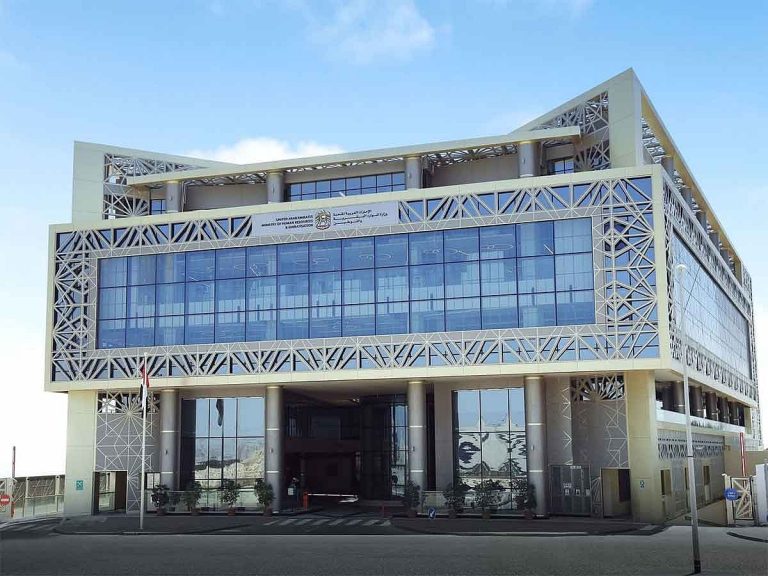UAE Supports Philippines After Typhoon Kalmaegi Disaster
The United Arab Emirates has extended its heartfelt condolences to the Philippines following the devastating impact of Typhoon Kalmaegi. This natural disaster has resulted in significant loss of life, widespread injuries, and the displacement of thousands in the central region of the country.
The UAE’s Ministry of Foreign Affairs (MoFA) issued a statement expressing sympathy for the victims and their families, as well as solidarity with the Philippine government during this challenging time. The ministry also conveyed wishes for a swift recovery for those injured in the disaster.
Impact of Typhoon Kalmaegi
Typhoon Kalmaegi unleashed heavy rains and severe flooding across central Philippines, particularly affecting Cebu province. Reports indicate that over 40 lives have been lost, with additional fatalities confirmed in nearby provinces such as Leyte and Bohol. The flooding has left entire towns submerged, with vehicles and shipping containers swept away by the powerful currents.
In Cebu province alone, 39 deaths have been reported, excluding those in Cebu City. Rescue operations are ongoing, as emergency responders work to reach individuals trapped in floodwaters, including vulnerable children in urban areas.
Unprecedented Rainfall and Evacuations
The rainfall in the vicinity of Cebu City reached an astonishing 183 millimeters within just 24 hours, surpassing the area’s average monthly rainfall of 131 millimeters. Provincial Governor Pamela Baricuatro described the flooding as “unprecedented,” emphasizing that the water poses a greater threat than the wind associated with the typhoon.
In anticipation of the storm’s arrival, nearly 400,000 residents were evacuated from vulnerable areas. Although the winds of Typhoon Kalmaegi have weakened slightly to 120 km/h, with gusts reaching 165 km/h, the Philippines remains at risk, facing an average of 20 storms each year. Meteorologists predict that three to five more storms could strike the region before the end of December.
Climate Change Concerns
Experts are increasingly linking the intensity of storms like Typhoon Kalmaegi to human-driven climate change. Warmer ocean temperatures and a more humid atmosphere contribute to the rapid strengthening of storms and the potential for heavier rainfall, exacerbating the impact of such natural disasters.
FAQs
What areas in the Philippines were most affected by Typhoon Kalmaegi?
Cebu province was particularly hard hit, with significant flooding reported in Cebu City and surrounding towns. Other affected provinces include Leyte and Bohol.
How many people were evacuated due to the typhoon?
Nearly 400,000 people were evacuated from vulnerable areas as a precautionary measure before the storm made landfall.
What is the expected frequency of storms in the Philippines for the remainder of the year?
The Philippines typically experiences around 20 storms annually, with meteorologists predicting three to five more storms could occur before December.
Conclusion
The UAE’s expression of solidarity with the Philippines highlights the international community’s support during this crisis. As rescue efforts continue and the nation begins to recover, attention must also turn to addressing the underlying issues of climate change that contribute to the increasing severity of such natural disasters.
The Philippine government has mobilized various agencies to assist in the ongoing rescue and recovery efforts. The National Disaster Risk Reduction and Management Council (NDRRMC) is coordinating with local authorities to provide immediate relief to affected communities, including food, medical assistance, and temporary shelter for those displaced by the flooding. The government is also assessing the extent of the damage to infrastructure, agriculture, and housing to facilitate a comprehensive recovery plan.
International aid has begun to flow in, with several countries and organizations offering assistance to the Philippines. This support is crucial as the nation grapples with the aftermath of Typhoon Kalmaegi and prepares for the possibility of additional storms. Humanitarian organizations are also on the ground, working to deliver essential supplies and support to the most vulnerable populations, particularly in remote areas that may have been cut off from aid.
As the Philippines continues to face the challenges posed by natural disasters, discussions around disaster preparedness and climate resilience are becoming increasingly important. The government is expected to review and enhance its disaster response strategies, focusing on improving early warning systems and community preparedness programs to mitigate the impact of future storms.
Also Read:
Typhoon Kalmaegi Triggers Severe Flooding in Cebu, Philippin







